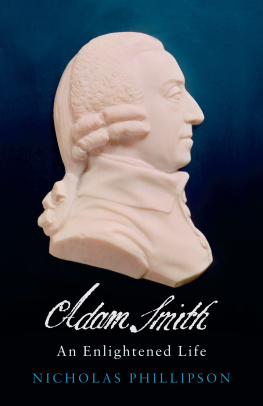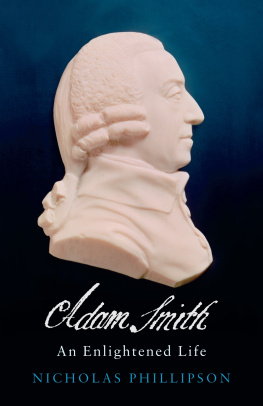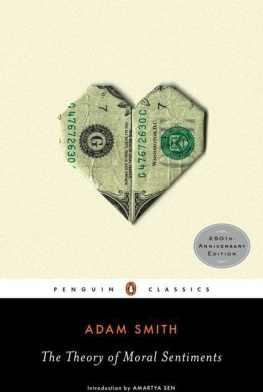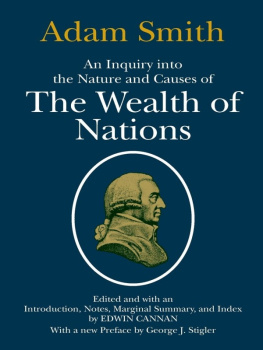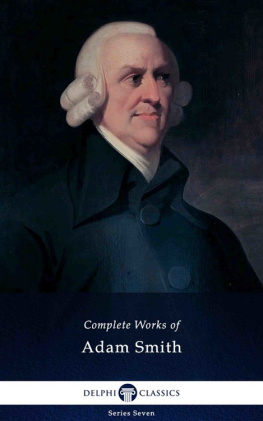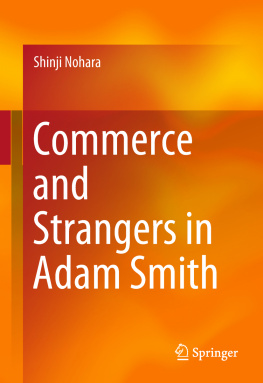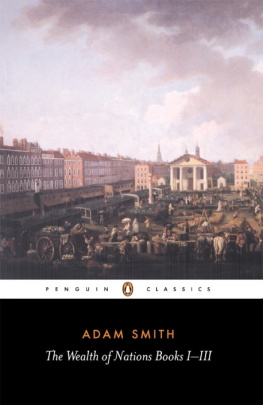Penguin Ireland, 25 St Stephens Green, Dublin 2, Ireland (a division of Penguin Books Ltd)
Penguin Group (Australia), 250 Camberwell Road, Camberwell, Victoria 3124, Australia
(a division of Pearson Australia Group Pty Ltd)
Penguin Books (South Africa) (Pty) Ltd, 24 Sturdee Avenue, Rosebank 2196, South Africa
All rights reserved.
Without limiting the rights under copyright reserved above, no part of this publication may be reproduced, stored in or introduced into a retrieval system, or transmitted, in any form or by any means (electronic, mechanical, photocopying, recording or otherwise) without the prior written permission of both the copyright owner and the above publisher of this book
List of Illustrations
Plates
The Burgh School, Kirkcaldy. (Fife Council Libraries & Museums: Kirkcaldy Museum & Art Gallery)
Eutropii historiae breviarum ab urbe condita usque ad Valentinianum & Valentem Augustum In usum scholarum. Editio sexta correctior (Edinburgh, 1725). (Fife Council Libraries & Museums: Kirkcaldy Museum & Art Gallery)
The Colledge of Glasgow (early eighteenth century), by or after John Slezer, Theatrum Scotiae (1693). (Hunterian Art Gallery, University of Glasgow)
Balliol College, Oxford, from D. Loggan, Oxonia Illustrata (1765). (Private collection/Giraudon/The Bridgeman Art Library)
)
Francis Hutcheson, from F. Blackburn, Memoirs of Thomas Hollis Esq. (London, 1780). (Glasgow University Library)
Archibald, Earl of Islay and 3rd Duke of Argyll, engraving T. Chambars after A. Ramsay. (Collection, the author)
David Hume, frontispiece from his History of England from the Invasion of Julius Caesar to the Revolution in 1688 (Edinburgh, 1770). (Getty Images)
A General View of the City and Castle of Edinburgh, the Capital of Scotland (anon., 1765). (Courtesy Edinburgh City Libraries and Information Services Edinburgh Room)
Henry Home, Lord Kames, portrait by David Martin. (Scottish National Portrait Gallery)
Etienne Bonnot de Condillac, engraving by G. Volpato. (Bibliothque Nationale, Paris/The Bridgeman Art Library)
Charles Louis de Secondat, Baron de Montesquieu, engraving by Augustin de Saint-Aubin (Private collection/ The Bridgeman Art Library)
Jean-Jacques Rousseau Gathering Herbs at Ermenonville, June 1778, engraving by Louis Michel Halbou. (Bibliothque Nationale, Paris/Archives Charmet/The Bridgeman Art Library)
)
A View of the Middle Walk in the College Garden (1756), by Robert Paul. (Hunterian Art Gallery, University of Glasgow)
Henry, 3rd Duke of Buccleuch, portrait by Thomas Gainsborough. (The Trustees of the 9th Duke of Buccleuchs Chattels Fund)
David Hume, portrait by Louis Carrogis. (Scottish National Portrait Gallery)
Vue de la Ville de Genve prise du Lac from Tableau de la Suisse, o Voyage Pittoresque fait dans les xiii Cantons du Corps Helvtique, by J.-B. de la Borde (c. 1780). (Edinburgh University Library)
Portrait of Voltaire from a drawing made on 6th July 1775, engraving by Dominique Vivant Denon. (Muse de la Ville de Paris, Muse Carnavalet, Paris/The Bridgeman Art Library)
Plan of Paris, engraving by L. Bretez. (Private collection/Giraudon/The Bridgeman Library)
Francois Quesnay, engraving by J.-G. Wille. (Bibliothque Nationale, Paris/The Bridgeman Art Library)
Northumberland House, Charing Cross, by Sir John Dean Paul. (Bonhams, London/The Bridgeman Art Library)
Elevation of the British Coffee House, by Robert Adam. (Private collection/The Bridgeman Art Library)
View from the Walk on the top of Calton Hill, by Mary Elton. (Courtesy Edinburgh City Libraries and Information Services Edinburgh Room)
The Philosophers, by John Kay, from A Series of Original Portraits and Character Etchings (Edinburgh, 1842). (Edinburgh University Library)
Margaret Douglas, Mother of Adam Smith, portrait attributed to Conrad Metz. (Collection of Rory Cunningham)
Lord Rockville, Dr Adam Smith and Commissioner Brown, by John Kay, from A Series of Original Portraits and Character Etchings (Edinburgh, 1842). (University of Edinburgh)
Adam Smiths grave, Canongate Graveyard, Edinburgh. (Royal Commision on the Ancient and Historical Monuments of Scotland)
Illustrations in the Text
: Adam Smiths bookplate. (Edinburgh University Library)
: The Author of the Wealth of Nations, by John Kay, from A Series of Original Portraits and Character Etchings (Edinburgh 1842). (Edinburgh University Library)
: Notes of Dr. Smiths Rhetorick Lectures [17623]. Lecture 3 Of the origin and progress of language. (Glasgow University Library MS Gen 95/1,2)
: Title page from Adam Smith, The Theory of Moral Sentiments (1759). (Edinburgh University Library)
: Title page from Adam Smith, An Inquiry into the Nature and Causes of the Wealth of Nations (1776). (Glasgow University Library)
Acknowledgements
This book has had an elephantine period of gestation and has incurred more debts on the way than I can hope to repay here. It was the late Duncan Forbes who introduced me to Smith, the Scottish Enlightenment and intellectual history in a legendary Cambridge special subject which few who were lucky enough to have taken will ever forget. My own students and postgraduates may recognize various themes of this book which were tried out in my own special subjects at Edinburgh and will I hope remember discussions which were always enjoyable, sometimes memorable, and have helped to shape my thinking more than they may have realized. It was from them that I came to learn that for many intelligent students, Smiths first book, the Theory of Moral Sentiments, was more of a living text than the Wealth of Nations, and it was they who helped me to understand why Smith preferred the first book to the second.
In planning this book I wanted to write about Smiths life and works in a way which would throw light on the development of an extraordinary mind and an extraordinarily approachable philosophy at a remarkable moment in the history of Scotland and of the Enlightenment. I was particularly lucky that the book began to take shape when Susan Manning, Thomas Ahnert and I were directing a research seminar, funded by the Leverhulme Trust, on the Science of Man in Scotland. Our discussions and those of our research group were invaluable in keeping my thinking on the move at an important moment in its development. At the same time, my thinking about Smith, the Scottish Enlightenment and much else besides was being refreshed, as it has been for more than twenty years, by John Pocock and Istvan Hont. My debts to them are not easily repaid.

